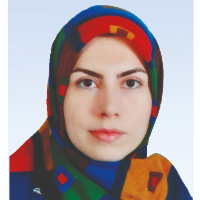Study and Analysis of the Illustrated Version Of Varqa and Gulshah Belonging to the Seljuk School of Painting
The poem of Varqa and Gulshah Ayyuqi is a very valuable manuscript of the Seljuk era, which has been preserved for the quality of the drawings and the representation of its story by the painter. Books such as Survey of Persian Art of Arthur Apham Pope, Persian Miniature of Basil Gray, Islamic Art and Architecture of Ernst Kuhnel, catley marguerite and humby louis in the their book, Seljuk and Kharazmi art described a brief history of Seljuk painting and the characteristics of painting of this period. This research seeks to answer these questions: 1. To what extent does the painting of the manuscript of Varqa and Gulshah express the story and which plots of the story does it contain? 2. How was the atmosphere of the drawings according to the written text?. Based on a story "told by Arabs," the poem was (re-) composed by Ayyuqi in the eastern Iranian world during the Ghaznavid period. The poem Varqa and Gulshah is a love story about the life of two lovers in Saudi Arabia and the Islamic period, which is a description of their mania, problems and sufferings, wars and their separation in the way of love and joiner. The story of Varqa and Gulshah is set in Arabia in the time of the Prophet Muhammad and revolves around the misfortunes of a pair of lovers. It is in the fourth century and early fifth century AH. Varqa and Gulshah are the children of two brothers who are joint chiefs of a tribe named Bani Shayba. The two are raised together, fall in love and become engaged (Grubar, 2019, p. 73). Considering that Varqa and Gulshah manuscripts the earlist Islamic romantic manuscript in which the roots of the connection between poetry and painting can be recognized, there was a reason to choose this manuscript and to study and adapt its drawings with poems, so that the painter’s success in visual expression of the poem could be realized. Findings of the research indicate that in this illustrated version, all the features of Seljuk painting are reflected and there is a valuable connection with literature. In illustrated manuscripts, how the story is represented as an image is of special importance. Therefore, in this study, the adaptation of the story of Varqa and Gulshah with its painting has been considered. Seljuks with emphasis on the art of this period, the characteristics of painting of the Seljuk school are mentioned. By depicting 71 paintings from a copy preserved in the Topkapı Palace Museum Library in Istanbul, containing the most important events and characters that contain the main plot of Ayyuqi, the painter has shown the fidelity of image to the literary text. This story was classified in the form of 17 main plots, and it turned out that the painter illustrated 13 examples of it and, following the text, dealt with them very sensitively and has illustrated the turning points of the story into four plots and several narrations. The research method in this article is descriptive-analytical and the data collection method is library.
Seljuk period , literature , painting , love , Varqa , Gulshah
- حق عضویت دریافتی صرف حمایت از نشریات عضو و نگهداری، تکمیل و توسعه مگیران میشود.
- پرداخت حق اشتراک و دانلود مقالات اجازه بازنشر آن در سایر رسانههای چاپی و دیجیتال را به کاربر نمیدهد.


